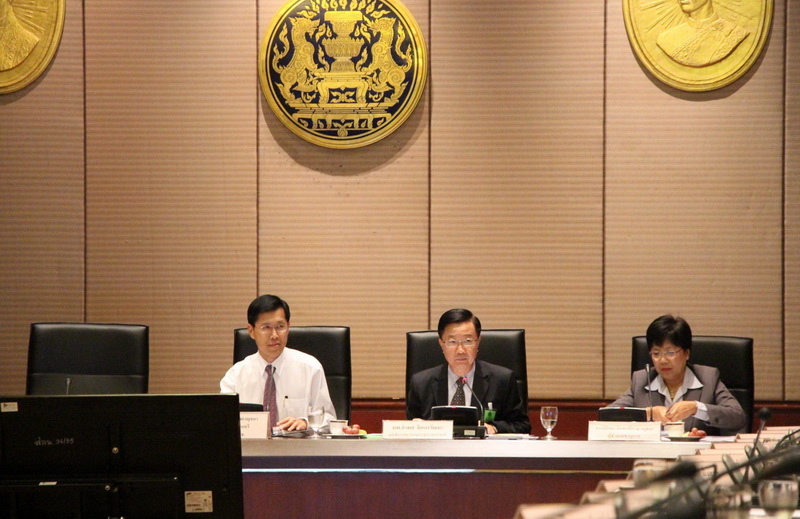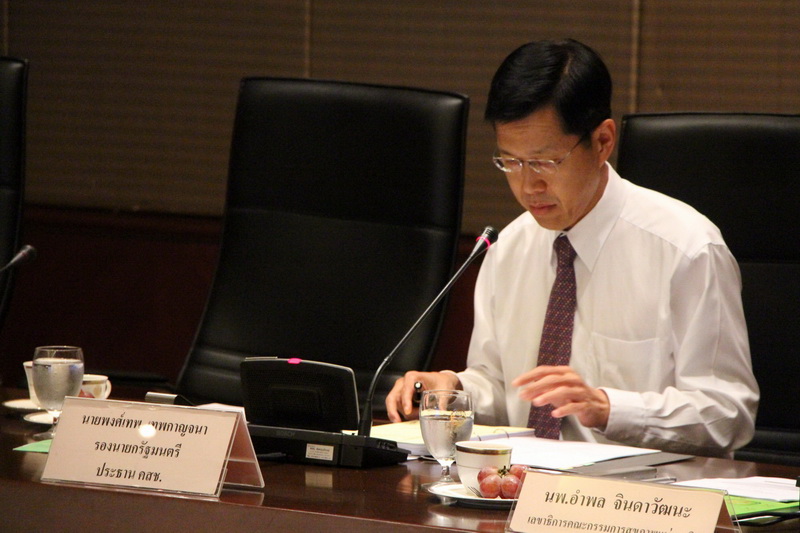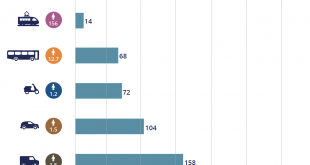NHC agreed to propose walking and cycling resolution to the Cabinet
On August 16, 2013, a meeting of the National Health Commission (NHC) chaired by Mr. Pongthep Thepkanjana, a Deputy Prime Minister, at the Government House approved a resolution of the Fifth National Health Assembly (NHA) on ‘Creation of Systems and Infrastructure to Promote Walking and Cycling in Daily Life’ and agreed to propose the resolution to the Government Cabinet for approval. The resolution initiated and advocated by Thailand Cycling Club (TCC) was passed by the NHA in December 2012
|
The National Health Commission (NHC) |
Mr. Pongthep Thepkanjana a Deputy Prime Minister, at the Government House approved a resolution of the Fifth National Health Assembly (NHA) and chaired of NHC |
(see the NHA resolution at http://www.thaicyclingclub.org/content/general/news/detail/1517)
The meeting was asked to consider two main proposals: (1) approval of the NHA resolution, and (2) proposing the NHA resolution to the Government Cabinet for approval. Content of the resolution was explained to the meeting by Prof. Thongchai Panswad Ph.D., TCC Founder and President, in capacity as Chairman of an academic working group appointed by the NHC to develop a draft resolution for the NHA.
The agenda was then widely discussed by NHC commissioners, some of whom still currently used bicycle in their daily life. All commissioners giving their views in the meeting fully supported it in one voice that this NHA resolution is a very good proposal, being an encompassing key policy matter that is implementable and would provide not only health but also social and environmental benefits to individuals, communities and the country as a whole.
Several commissioners gave valuable suggestions about how to implement the resolution to achieve concrete results. For instance, when the Government Cabinet approves the resolution as a macro policy, there must be real actions at micro level to go together; the NHC should use its nationwide networks for policy implementation at local level. Priority should be identified what matters in the resolution are to be implemented first and what agencies are to be the main ones to implement them. Pilot projects could be initiated in 10-20 provinces that local authorities/administrative organizations had expressed already their interest to promote walking and cycling but complained that they lacked supports. Universities could also become models for walking and cycling community/town as they are now competing with each other on being ‘Green University’. Concrete results produced by these pilot projects and models would be driving forces for further implementation in other provinces and sectors.
Two commissioners said that when the Cabinet gives approval, local administrative organizations all over the country they represented would fully embrace the agenda and join as a driving force; although not all actions would be completed in 2015, concrete successes could be definitely seen. Many things can be done, such as improvement of safety for bicycle users, provision of bicycle parking facilities, and planting and caring of trees to provide shade for pedestrians and bicycle users.
A commissioner representing the Ministry of Education confirmed that the ministry had already supported promotion of walking and cycling, and would see how to implement related issues in the resolution as appropriate to conditions of schools and students, while a commissioner representing the Ministry of Natural Resources and Environment saw that this resolution was a good integration of health and environmental dimension. A commissioner representing organizations of disabled persons, on the other hand, expressed her support that with approval by the Cabinet, the resolution would also benefit persons with disabilities, in line with what they had asked for many years. This view was supported by another commissioner representing the Ministry of Social Development and Human Security who emphasized that to achieve maximum benefits, design and construction of systems and infrastructure for walking and cycling should provide safe and convenient mode of transport for children, elderly people and disabled persons.
In response to a concern expressed by a few commissioners that the proposed timeframe was not realistic as the resolution, in wordings, required actions to be completed by 2015 and thus proposed that this should be reviewed, possibly to extend the deadline, before submitting it to the Cabinet, Prof. Thongchai explained that it was not expected that all proposed actions would be completed in a few years. It was expected instead that all concerned agencies change their way of thinking to seriously promote walking and cycling in daily life and certain measures that could be done in that timeframe should be done.
In the end, the Deputy Prime Minister as NHC Chairman concluded that ‘we (NHC) agree with the NHA resolution and are to propose it together with notes and comments from this meeting to the Government Cabinet for approval’.
When the meeting ended, both NHC Secretary and Chairman of its committee to drive and monitor implementation of NHA resolutions came to talk with Prof. Thongchai that now NHC Office and TCC need to discuss how to implement the NHA resolution at local level, especially by using NHC’s nationwide network, at the same time as lobbying the Cabinet to approve it in full.
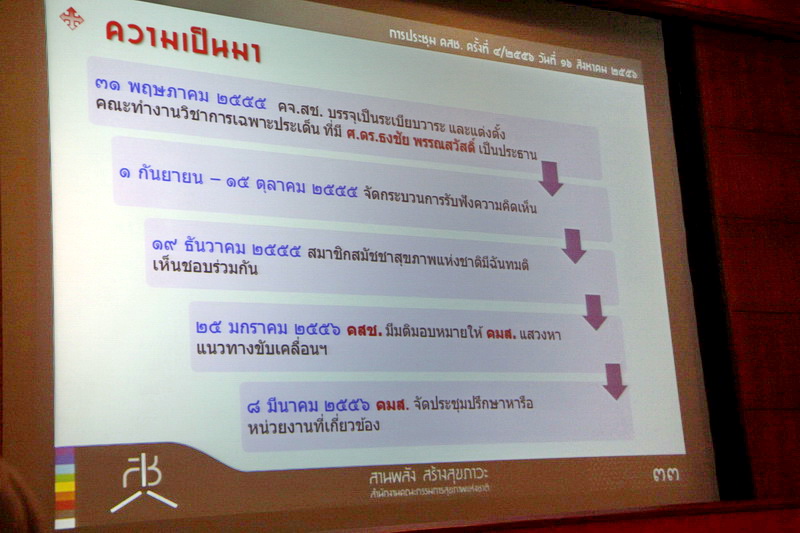 |
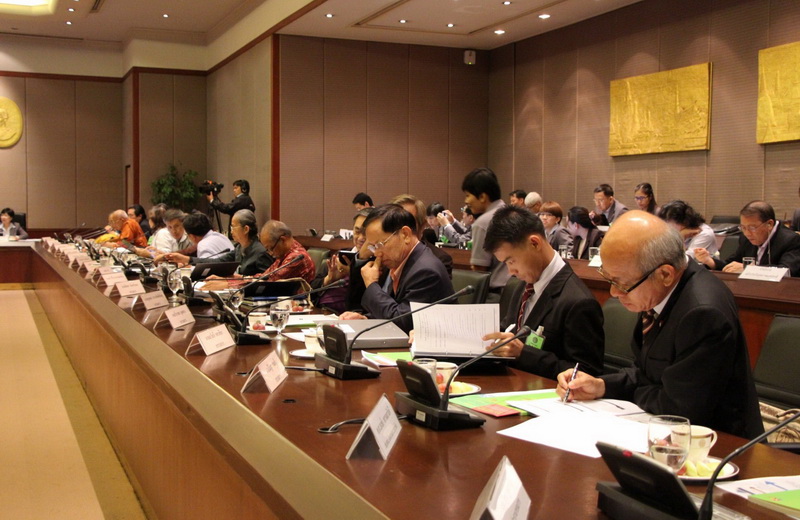 |
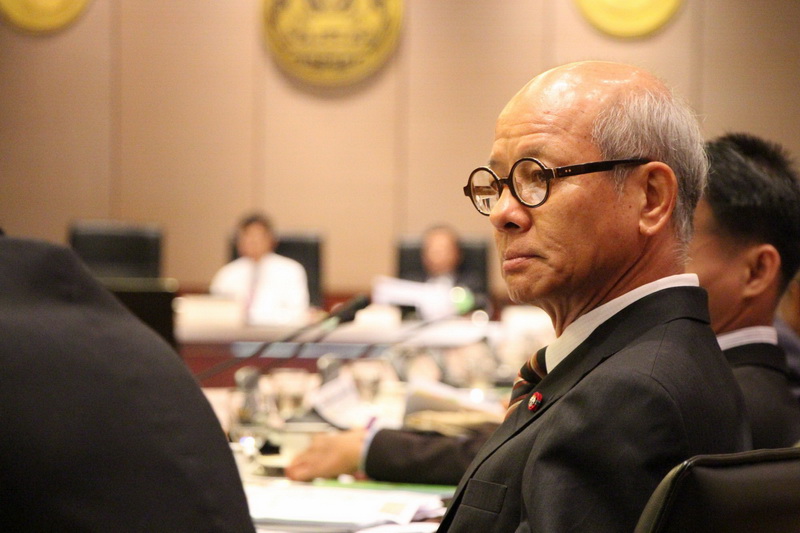 |
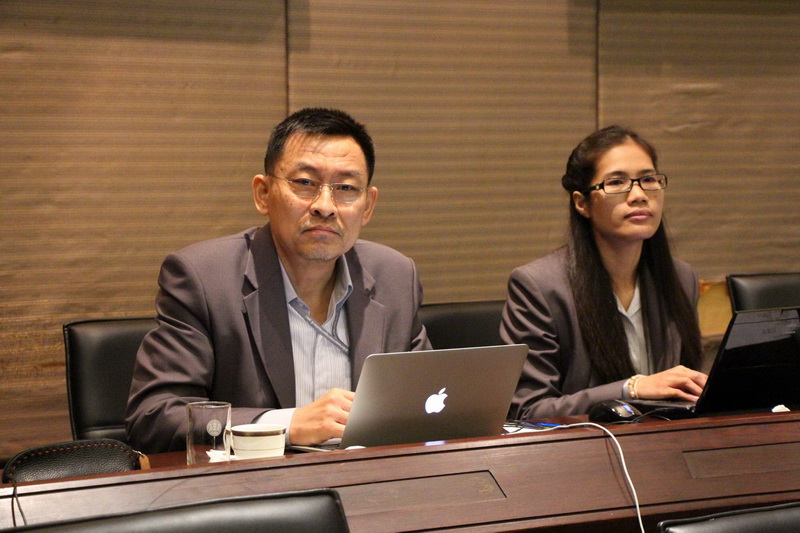 |
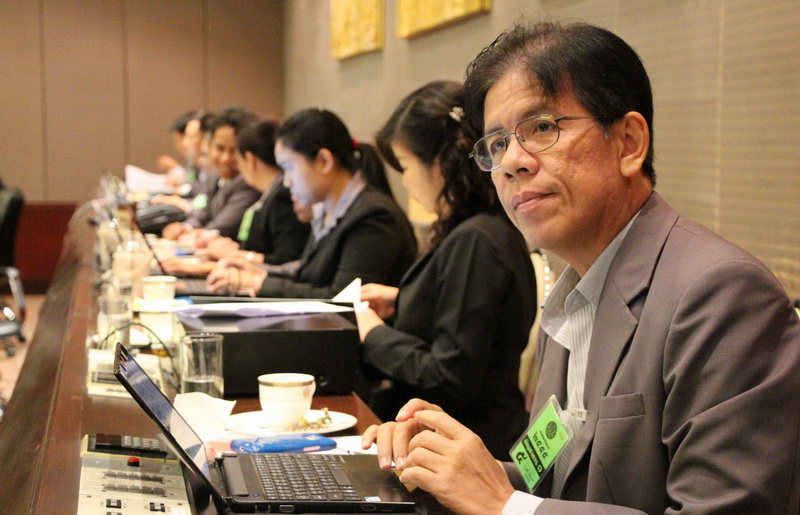 |
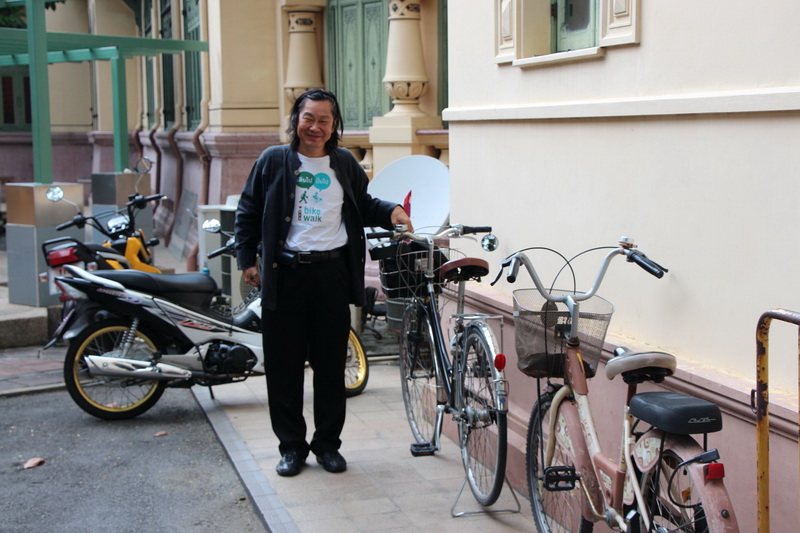 |
| A meeting of the National Health Commission (NHC) at the Government House | ||
Apart from Prof. Thongchai, Mr. Gawin Chutima, TCC Committee Member and Secretary of the NHC’s academic working group that produced the draft resolution, together with Mr. Ittipon Barameekriangkrai, TCC Public Relations, also went to observe the meeting. We noticed that actually there was quite a good number of bicycles in the Government House’s compound. However, as no proper bicycle parking facilities was provided, these bicycles were ‘parked’ or left scattered around wherever users thought their bicycles were protected from rain and sun. TCC hope that when the Cabinet approves the resolution, the Government House would be one of the first government offices that provide bicycle parking facilities that are up to recognized standards and help encourage its staff and visitors to use bicycles.
Reported by Gawin Chutima
 ชมรมจักรยานเพื่อสุขภาพแห่งประเทศไทย ชมรมจักรยานเพื่อสุขภาพแห่งประเทศไทย
ชมรมจักรยานเพื่อสุขภาพแห่งประเทศไทย ชมรมจักรยานเพื่อสุขภาพแห่งประเทศไทย
